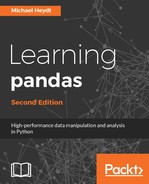Data is distributed all over the planet. It is stored in different formats. It has widely varied levels of quality. Because of this there is a need for tools and processes for pulling data together and into a form that can be used for decision making. This requires many different tasks and capabilities from a tool that manipulates data in preparation for analysis. The features needed from such a tool include:
- Programmability for reuse and sharing
- Access to data from external sources
- Storing data locally
- Indexing data for efficient retrieval
- Alignment of data in different sets based upon attributes
- Combining data in different sets
- Transformation of data into other representations
- Cleaning data from cruft
- Effective handling of bad data
- Grouping data into common baskets
- Aggregation of data of like characteristics
- Application of functions to calculate meaning or perform transformations
- Query and slicing to explore pieces of the whole
- Restructuring into other forms
- Modeling distinct categories of data such as categorical, continuous, discrete, and time series
- Resampling data to different frequencies
There are many data manipulation tools in existence. Each differs in support for the items on this list, how they are deployed, and how they are utilized by their users. These tools include relational databases (SQL Server, Oracle), spreadsheets (Excel), event processing systems (such as Spark), and more generic tools such as R and pandas.
